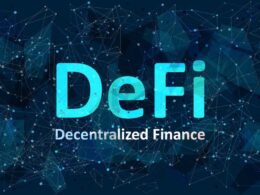Quick Links
The blockchain ecosystem is continually evolving, with a constant pursuit of improving scalability and efficiency. One of the key solutions that have emerged to address these challenges is Rollup technology. In this blog post, we will explore the intricacies of the Ethereum Improvement Proposal 4844 (EIP-4844) and dissect its profound impact on the economics of Rollups.
Understanding Rollup Solutions
Rollup solutions represent a pivotal concept in the blockchain domain, designed to overcome the scalability and efficiency hurdles associated with smart contracts and decentralized applications (DApps). They operate by “rolling up” multiple transactions into a single batch, which is then submitted to the main blockchain. There are two primary types of Rollup solutions:
- Optimistic Rollups: Optimistic Rollups prioritize scalability and reduce transaction costs. They process the majority of transactions off-chain and only submit data to the main blockchain in the event of a dispute. This approach accelerates smart contract execution by assuming the validity of transactions by default.
- ZK-Rollups: ZK-Rollups leverage advanced cryptographic techniques to prove the validity of multiple transactions without revealing their details. These solutions enhance privacy, security, and efficiency by significantly reducing transaction costs. ZK-Rollups are particularly well-suited for applications demanding a high level of privacy, such as decentralized finance (DeFi).
Rollup solutions have gained immense popularity due to their ability to strike a balance between scalability and security. They achieve this by shifting most transaction processing off-chain and submitting only essential data to the main blockchain. This not only enhances network efficiency but also reduces congestion and lowers gas fees. Moreover, they maintain the same level of security as the underlying blockchain, making them a promising avenue for the future of blockchain technology.
As the demand for blockchain applications and smart contracts continues to soar, Rollup solutions are set to play a pivotal role in upholding the efficiency and sustainability of blockchain networks while ensuring security remains paramount. These innovative solutions are paving the way for a more scalable and cost-effective blockchain ecosystem.
Understanding EIP-4844: Proto-Danksharding
The goal of EIP-4844, also known as “Proto-Danksharding,” is to present a large part of the basic framework and related routines that make up a full Danksharding definition. This includes transaction structures and validation processes. Additionally, it represents the first step towards achieving Ethereum’s sharding goal and includes a plan that could greatly lower the costs of running rollups.
However, it’s important to note that this proposal does not yet incorporate the full-scale sharding concept. The primary objective of EIP-4844 is to enhance the efficiency of layer 2 rollup solutions, allowing them to achieve scalability without the necessity of waiting for the complete Sharding implementation to be realized. It serves two primary objectives:
- Pre-introducing Required Logic: EIP-4844 introduces some of the logic necessary for a smooth transition of the protocol architecture to Danksharding in the future.
- Introducing Blob Carrying Transactions: The central feature of EIP-4844 is the introduction of “blobs,” which stands for Binary Large Objects. These are data chunks attached to transactions. Unlike regular transactions, blob data is exclusively stored on the Beacon Chain and incurs minimal gas fees. Blobs are designed to significantly reduce the cost of data availability (L1 publication) for Rollups by creating a dedicated storage space for data availability, independent of block space. This is in contrast to the current practice where all Rollups use call data space to write their data to Ethereum.
The idea of reducing the data availability cost of Rollups has been under consideration for some time. Initially, the focus was on reducing the calldata gas fee. However, this approach was swiftly dismissed due to concerns about block size. Reducing calldata gas fees by a factor of ten, for example, would result in a maximum block size that the network could not handle. EIP-4844 takes a different path by introducing blobs and a fee market for them to lower the data availability cost of Rollups.
Positive market reactions have been observed within a month before and after the implementation of Ethereum Improvement Proposals (EIPs). For instance, in the cases of EIP-1559 (London), EIP-3675 (The Merge), and EIP-4895 (Shanghai), Ethereum’s price surged by a range of 10% to 80%. Looking ahead, the upcoming Deneb-Cancun-combined Dencun hard fork, scheduled for the year’s end, is generating anticipation and might drive the price of Ethereum upwards.
Impact on Rollup Economics
L2 transaction fees consist of two main elements:
- Rollup Expenses: This covers the costs associated with aggregating transactions, submitting them to the Ethereum network, and storing them on Ethereum.
- Execution Costs: This accounts for the expenses related to executing the transaction on the L2 layer.
In mathematical terms, the L2 transaction fee can be calculated as follows:
L2 Transaction Fee = Rollup Costs + Execution Costs = [ L1 Gas Price * (Calldata + Fixed Overhead)] + [ L2 Gas Price * L2 Gas Used]
The implementation of EIP-4844 will have a profound impact on the economics of Rollups. EIP-4844 provides a way to measure this impact based on two methods:
- Storage Cost per Byte: Following the proposed design in EIP-4844, each Blob’s size will be 128KB, and it will consume 131,072 gas. Consequently, on average, every byte of Blob data would require 1 gas, in contrast to the current practice where storing a single byte of Calldata consumes 16 gas. This signifies a significant reduction in the storage cost for L2 transactions by a factor of 16.
However, it’s important to note that this calculation primarily considers the storage cost per byte and does not fully account for potential changes in the overall gas capacity of a block post-EIP-4844. As the total gas capacity of a block may undergo adjustments, this approach might slightly underestimate the potential reduction.
- Block Size Consideration: According to the current parameters, in the Target Block Size scenario, a block can accommodate 3 Blobs (equivalent to 0.375MB), with the potential to handle a maximum of 6 Blobs (0.75MB). Given that the current Calldata occupies around 2-10KB per block, after EIP-4844, it becomes possible to accommodate up to 384 times more Calldata, especially in the typical scenario when the block size aligns with the target size. This expansion in Calldata capacity within a block leads to a subsequent reduction in the storage cost of Calldata, resulting in a proportional decrease in the cost of L2 transactions.
Additionally, if we assume a uniform Calldata size of 2KB for each Rollup, EIP-4844 would have the capacity to accommodate a maximum of 384 Rollups. However, this falls short of the larger number of Rollups that many have envisioned.
With these considerations in mind, it’s possible to estimate the order of magnitude for Ethereum’s transactions per second (TPS) after EIP-4844. Presently, the average L2 transaction consumes approximately 3,000 gas of Calldata on L1. Given that each byte of Calldata carries a gas cost of 16, this suggests that each L2 transaction would be approximately 187 bytes on L1.
Following the implementation of EIP-4844, Ethereum’s target block size is expected to be 0.375 MB, and the network will produce a block approximately every 12 seconds. Consequently, there will be around 32 KB of available space per second, capable of accommodating an estimated 175 transactions. In typical situations, when the block size aligns with the target, EIP-4844 has the potential to elevate Ethereum’s transactions per second (TPS) to 175. Under optimal conditions, this figure could double, reaching a maximum TPS of 350.
Conclusion
It’s important to note that EIP-4844 is a significant step toward enhancing Ethereum’s scalability, but it may not be the sole solution. Achieving greater scalability might necessitate additional cost-effective and efficient data availability solutions, such as a Data Availability (DA) Layer like Celestia or a DA Chain like zkPorter, even after EIP-4844’s implementation.
Furthermore, the compression rate of L2 transactions directly impacts the size of calldata stored on L1. A higher compression rate results in lower required L1 fees. As zkRollup technology continues to advance, the amount of data that needs to be stored on L1 decreases, offering potential scalability benefits for Ethereum. This is because zkRollup only requires the storage of state changes, not the entire transaction.
EIP-4844 represents a pivotal step in Ethereum’s journey towards scalability. Its introduction of blobs and the associated economics transformation holds great promise for making Rollups more cost-effective and efficient. However, Ethereum’s quest for scalability is multi-faceted, and it may require a combination of solutions to achieve the desired level of network efficiency and capacity. EIP-4844, along with future innovations, will play a crucial role in shaping the future of Ethereum’s blockchain ecosystem.









